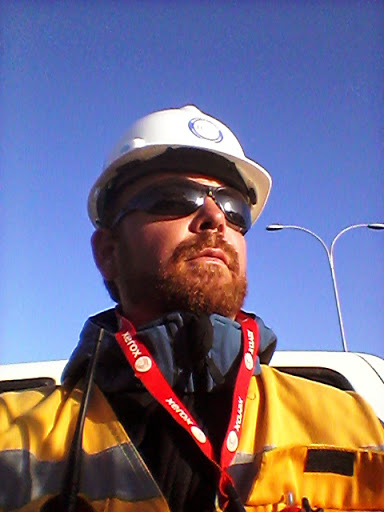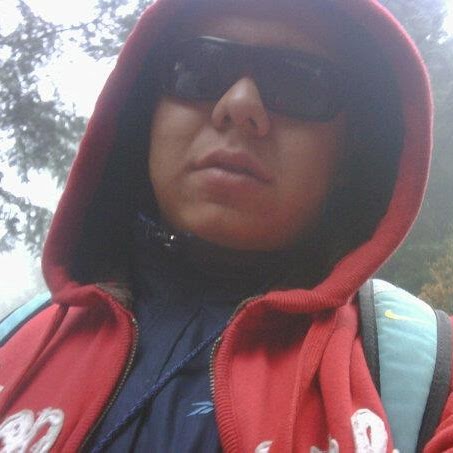Christopher M Villar
age ~49
from Round Rock, TX
- Also known as:
-
- Christopher Merlin Villar
- Christopher Mer Villar
- Chris M Villar
- Christopher M Viller
- Christopher M Villa
- Christoph Villar
- Christopher Vialla
- Christopher R
Christopher Villar Phones & Addresses
- Round Rock, TX
- Mandeville, LA
- 704 Delmar Dr, Georgetown, TX 78626 • 5127507767
- 905 9Th St, Georgetown, TX 78626 • 5128680839 • 5126800839 s
- 1508 Vine St, Georgetown, TX 78626
- 600 Luther Dr, Georgetown, TX 78628 • 5128680839
- 301 Ranch Road 1869, Liberty Hill, TX 78642 • 5127785102
- College Station, TX
- Fort Wayne, IN
- Bryan, TX
- 704 Delmar Dr, Georgetown, TX 78626 • 5128680839
Work
-
Position:Machine Operators, Assemblers, and Inspectors Occupations
Name / Title
Company / Classification
Phones & Addresses
Managing
Champion Trailers, LLC
Ret Auto/Home Supplies Whol Auto Parts/Supplies · Auto Repair
Ret Auto/Home Supplies Whol Auto Parts/Supplies · Auto Repair
56705 Garrett Rd, Slidell, LA 70458
PO Box 1198, Slidell, LA 70459
9857817710, 9857817701, 8002296690
PO Box 1198, Slidell, LA 70459
9857817710, 9857817701, 8002296690
POLLA, LLC
480 Brownswitch Rd, Slidell, LA 70458
C/O Thomas E Phares, Slidell, LA 70458
113 Fountainbleau Dr, Mandeville, LA 70471
C/O Thomas E Phares, Slidell, LA 70458
113 Fountainbleau Dr, Mandeville, LA 70471
Director
ROADRUNNER INVESTMENTS LLC
905 W 9 St, Georgetown, TX 78626
Resumes

Independent Venture Capital & Private Equity Professional
view sourceLocation:
Greater New Orleans Area
Industry:
Venture Capital & Private Equity

Subsurface Utility Engineering Manager
view sourceLocation:
301 Rnch Rd, Liberty Hill, TX
Industry:
Civil Engineering
Work:
Surveying and Mapping, Llc (Sam)
Subsurface Utility Engineering Manager
Tesmec Usa, Inc. Oct 2012 - Feb 2013
Railway Engineering Manager
Brandt Engineered Products Mar 2011 - Jul 2012
Director-Service Planning, Rail Services
Grex- Georgetown Rail Equipment Company Dec 1999 - Oct 2010
Vice President - Engineering
Subsurface Utility Engineering Manager
Tesmec Usa, Inc. Oct 2012 - Feb 2013
Railway Engineering Manager
Brandt Engineered Products Mar 2011 - Jul 2012
Director-Service Planning, Rail Services
Grex- Georgetown Rail Equipment Company Dec 1999 - Oct 2010
Vice President - Engineering
Education:
Texas A&M University 1994 - 1999
Bachelors, Bachelor of Science, Mechanical Engineering Mandeville High School
Bachelors, Bachelor of Science, Mechanical Engineering Mandeville High School
Skills:
Engineering
Rail
Project Management
Contract Management
Project Planning
Team Building
Management
Program Management
Transportation
Operations Management
Railway
Branding and Identity
Manufacturing
Recruiting
Construction
Leadership
Contract Negotiation
Process Improvement
Customer Service
Light Rail
Surveying
Procurement
Railway Systems
Product Development
Logistics
Engineering Management
Continuous Improvement
Civil Engineering
Inspection
Sales
Lean Manufacturing
Budgets
Project Engineering
Change Management
Product Marketing
Public Transport
Process Engineering
Disaster Recovery
Highways
Six Sigma
Rolling Stock
Metro
Microstation
Road
Ms Project
Transportation Engineering
Signalling
Project Estimation
Cad
Cross Functional Team Leadership
Rail
Project Management
Contract Management
Project Planning
Team Building
Management
Program Management
Transportation
Operations Management
Railway
Branding and Identity
Manufacturing
Recruiting
Construction
Leadership
Contract Negotiation
Process Improvement
Customer Service
Light Rail
Surveying
Procurement
Railway Systems
Product Development
Logistics
Engineering Management
Continuous Improvement
Civil Engineering
Inspection
Sales
Lean Manufacturing
Budgets
Project Engineering
Change Management
Product Marketing
Public Transport
Process Engineering
Disaster Recovery
Highways
Six Sigma
Rolling Stock
Metro
Microstation
Road
Ms Project
Transportation Engineering
Signalling
Project Estimation
Cad
Cross Functional Team Leadership
Interests:
Economic Empowerment
Politics
Education
Science and Technology
Disaster and Humanitarian Relief
Politics
Education
Science and Technology
Disaster and Humanitarian Relief
Certifications:
Registered Professional Engineer
18.2.1 Subsurface Utility Engineering Pre-Certified
License 117026
Texas Board of Professional Engineers, License 117026
Texas Department of Transportation
18.2.1 Subsurface Utility Engineering Pre-Certified
License 117026
Texas Board of Professional Engineers, License 117026
Texas Department of Transportation
Us Patents
-
System And Method For Inspecting Railroad Track
view source -
US Patent:7616329, Nov 10, 2009
-
Filed:Jun 30, 2005
-
Appl. No.:11/172618
-
Inventors:Christopher M. Villar - Georgetown TX, US
Steven C. Orrell - Georgetown TX, US -
Assignee:Georgetown Rail Equipment Company - Georgetown TX
-
International Classification:G01B 11/14
-
US Classification:356625
-
Abstract:A system and method for inspecting railroad track is disclosed. The disclosed system includes lasers, cameras, and a processor. The lasers are positioned adjacent the track. The laser emits a beam of light across the railroad track, and the camera captures images of the railroad track having the beam of light emitted thereon. The processor formats the images so that they can be analyzed to determine various measurable aspects of the railroad track. The disclosed system can include a GPS receiver or a distance device for determining location data. The measurable aspects that can be determined by the disclosed system include but are not limited to the spacing between crossties, the angle of ties with respect to rail, cracks and defects in surface of ties, missing fastener components, misaligned fastener components, sunken tie plates, raised spikes, rail wear, gage of rail, ballast height relative to ties, size of ballast stones, and break or separation in the rail. The system includes one or more algorithms for determining these measurable aspects of the railroad track.
-
Ballast Gate
view source -
US Patent:D608278, Jan 19, 2010
-
Filed:Apr 29, 2009
-
Appl. No.:29/336225
-
Inventors:Charles Wayne Aaron - Salado TX, US
Christopher M. Villar - Georgetown TX, US -
Assignee:Georgetown Rail Equipment Company - Georgetown TX
-
International Classification:1302
-
US Classification:D13110
-
Tilt Correction System And Method For Rail Seat Abrasion
view source -
US Patent:8081320, Dec 20, 2011
-
Filed:Jun 23, 2009
-
Appl. No.:12/489570
-
Inventors:Christopher M. Villar - Liberty Hill TX, US
Steven C. Orrell - Georgetown TX, US -
Assignee:Georgetown Rail Equipment Company - Georgetown TX
-
International Classification:G01B 11/24
-
US Classification:356606, 238264
-
Abstract:A system and method for determining rail seat abrasion of a rail road track is disclosed. An inspection system comprises lasers, cameras, and processors adapted to determine whether rail seat abrasion is present along the track. The processor employs a mathematics based algorithm which compensates for tilt encountered as the inspection system moves along the track.
-
Side Dump And Bottom Dump Railroad Cars
view source -
US Patent:8256354, Sep 4, 2012
-
Filed:Mar 1, 2010
-
Appl. No.:12/715236
-
Inventors:Charles W. Aaron - Salado TX, US
Christopher M. Villar - Liberty Hill TX, US -
Assignee:Georgetown Rail Equipment Company - Georgetown TX
-
International Classification:B61D 7/04
B61D 7/10 -
US Classification:1052611, 105239, 298 1 B, 298 18
-
Abstract:A railroad car may comprise a frame comprising a first side and a second side laterally opposing each other. The railroad car may further comprise a first elastomeric mat and a second elastomeric mat supported by a plurality of reinforcement cables, the first and second elastomeric mats forming a load-carrying receptacle. Each elastomeric mat may have an outer edge and an inner edge, the inner edge of the first elastomeric mat abutting the inner edge of the second elastomeric mat when the load-carrying receptacle is in a closed configuration. The railroad car may further comprise a first pulley connected to the first side of the frame and a second pulley connected to the second side of the frame, the first pulley and second pulley each having a respective axis of rotation parallel to a direction of travel of the railroad car.
-
System And Method For Inspecting Surfaces Using Optical Wavelength Filtering
view source -
US Patent:8405837, Mar 26, 2013
-
Filed:May 13, 2009
-
Appl. No.:12/465473
-
Inventors:Christopher M. Villar - Liberty Hill TX, US
Steven C. Orrell - Georgetown TX, US
Charles Wayne Aaron - Salado TX, US -
Assignee:Georgetown Rail Equipment Company - Georgetown TX
-
International Classification:G01B 11/14
-
US Classification:356625
-
Abstract:A system and method for daylight inspection of a surface, such as a railroad track, is disclosed. The disclosed system includes lasers, cameras, and a processor. The lasers are positioned adjacent the surface. The laser emits a beam of light across the surface at a combined intensity of at least 0. 15 watts of intensity per inch of width of the surface, and the camera captures images of the surface having the beam of light emitted thereon. The camera includes a bandpass filter which passes only a band of light corresponding to a dip in solar radiation. The laser is selected to provide an emitted light beam which is more intense than the solar radiation at the dip. The processor formats the images so that they can be analyzed to determine various measurable aspects of the surface. The system and method includes one or more algorithms for determining these measurable aspects of the surface.
-
Methods For Gps To Milepost Mapping
view source -
US Patent:8209145, Jun 26, 2012
-
Filed:Jun 30, 2009
-
Appl. No.:12/494400
-
Inventors:David Pagliuco - Georgetown TX, US
Christopher M. Villar - Liberty Hill TX, US
Steven C. Orrell - Georgetown TX, US -
Assignee:Georgetown Rail Equipment Company - Georgetown TX
-
International Classification:G06F 19/00
G06F 17/40 -
US Classification:702158, 33773, 738658, 702 36, 702187, 702189, 708200, 708290
-
Abstract:A method to increase the accuracy of the interpolation of railroad mileposts is disclosed. Based upon image data and data provided in customer track charts, reference points are selected along the track, and their location is verified using GPS data. Once verified, the locations of various points between the reference points are determined using mathematical interpolation.
-
Railroad Car With System For Transporting And Unloading Cargo
view source -
US Patent:20030172836, Sep 18, 2003
-
Filed:Mar 12, 2002
-
Appl. No.:10/096062
-
Inventors:Christopher Villar - Georgetown TX, US
Garry Meyers - Council Bluffs IA, US
Steven Orrell - Georgetown TX, US -
Assignee:Georgetown Rail Equipment Company
-
International Classification:B61D017/00
-
US Classification:105/004100
-
Abstract:A railroad car for use with a train of like railroad cars is disclosed. In one embodiment, the railroad car is a continuous gondola car used to transport and unload replacement beams for a railroad bridge. The gondola car has a continuous bay defined by a floor extending between two sidewalls. A bridge extends from the floor of gondola car and overlays a portion of a floor of the adjacent gondola car. One or more guides are mounted along the floor of the continuous bay. The beams are supported and moved in the central bay by one or more supports movable along the one or more guides. The guides of the gondola car communicate with the guides of the adjacent gondola car. The beams may be moved from one car to another during unloading at least when the cars are substantially aligned or when they a pivoted in relation to one another.
-
Conveyor System For Loading Hopper Cars Of Dump Train And Associated Methods
view source -
US Patent:20050281643, Dec 22, 2005
-
Filed:Mar 1, 2005
-
Appl. No.:11/069782
-
Inventors:Christopher Villar - Georgetown TX, US
Steven Orrell - Georgetown TX, US
Thomas Schwertner - Jarrell TX, US
Clarence Wilganowski - Georgetown TX, US
John Messer - Belton TX, US -
International Classification:B65F009/00
-
US Classification:414339000
-
Abstract:A hopper car of a dump train for transporting material includes a hopper and a conveyor for loading the hopper with material. The loading conveyor includes a frame, a first pulley, a second pulley, and a continuous belt. The frame is attached to the car above the hopper. The first pulley is attached at one end of the frame adjacent an end of the hopper car. The first pulley has a motor positioned therein such that when the motor is operated the first pulley is rotated. The second pulley is attached at another end of the frame adjacent another end of the hopper car. The continuous belt is positioned on the first and second pulleys such that rotation of the first motorized pulley moves the continuous belt around the frame. A plow assembly is positioned on the frame and is operable to screed material off the continuous belt and into the hopper. The plow assembly includes a rotatable rod attached to the frame and includes a plow attached to the rotatable rod by an arm and a joint. Rotation of the rod raises or lowers the plow relative to the continuous belt. The plow assembly can be operated manually by a lever or can be operated hydraulically by a hydraulic actuator. The hopper car can also include a gate and a second conveyor for unloading the hopper. The gate can be mounted at an open bottom of the hopper and can be movable between opened and closed positions for discharging material from the hopper. The second conveyor is used for unloading the hopper and is positioned underneath the gate for carrying the discharged material along the dump train.
Vehicle Records
-
Christopher Villar
view source -
Address:704 Delmar Dr, Georgetown, TX 78626
-
VIN:1GNFC13007R190835
-
Make:CHEV
-
Model:TAHO
-
Year:2007
Medicine Doctors

Christopher F Villar
view sourceGoogleplus

Christopher Villar

Christopher Villar

Christopher Villar

Christopher Villar

Christopher Villar
Myspace
Youtube
Classmates

Chris Villar, Emerson Hig...
view source
Pennisula High School, Ro...
view sourceGraduates:
christopher villar (1999-2003),
dutch Thomas (1976-1980),
Dayle Thrift (1972-1976),
Cathy DeKoster (1974-1978),
James Rocknowski (1972-1976)
dutch Thomas (1976-1980),
Dayle Thrift (1972-1976),
Cathy DeKoster (1974-1978),
James Rocknowski (1972-1976)

Emerson High School, Slid...
view sourceGraduates:
Nancy Daspit (1987-1991),
Susanne Sullivan (1987-1991),
Chris Villar (1992-1996),
Larry Brooks (1995-1999),
Shan Myrick (1987-1991)
Susanne Sullivan (1987-1991),
Chris Villar (1992-1996),
Larry Brooks (1995-1999),
Shan Myrick (1987-1991)

Christopher Villar
view source
Christopher Villar
view source
Christopher Villar Pena
view source
Christopher Villar Verdejo
view source
Christopher F. Villar
view source
Christopher Villar Will...
view source
Ryan Christopher Villar
view source
Christopher Villar
view sourceGet Report for Christopher M Villar from Round Rock, TX, age ~49





